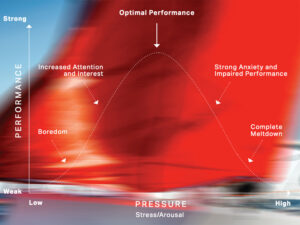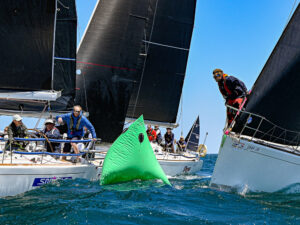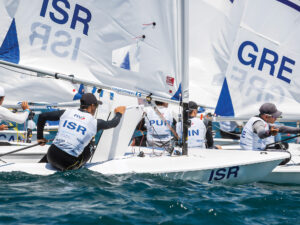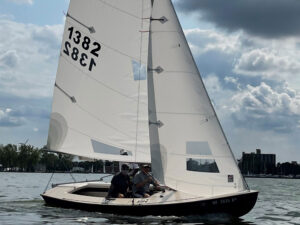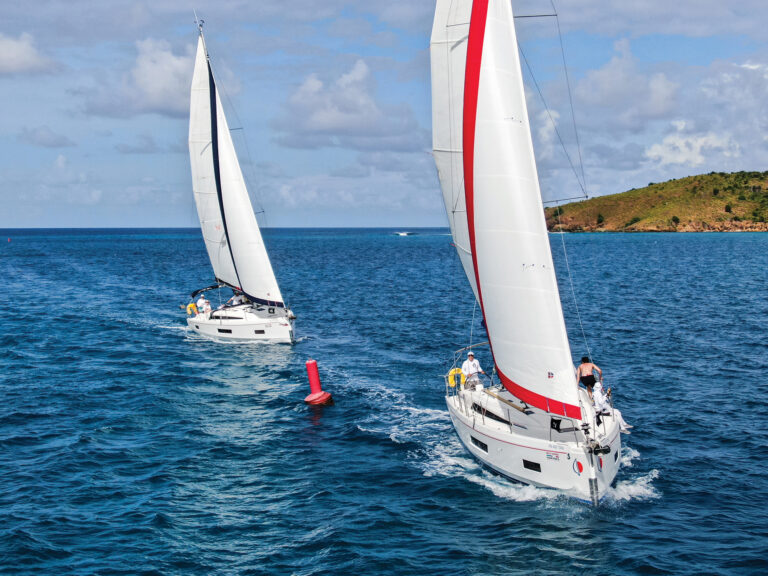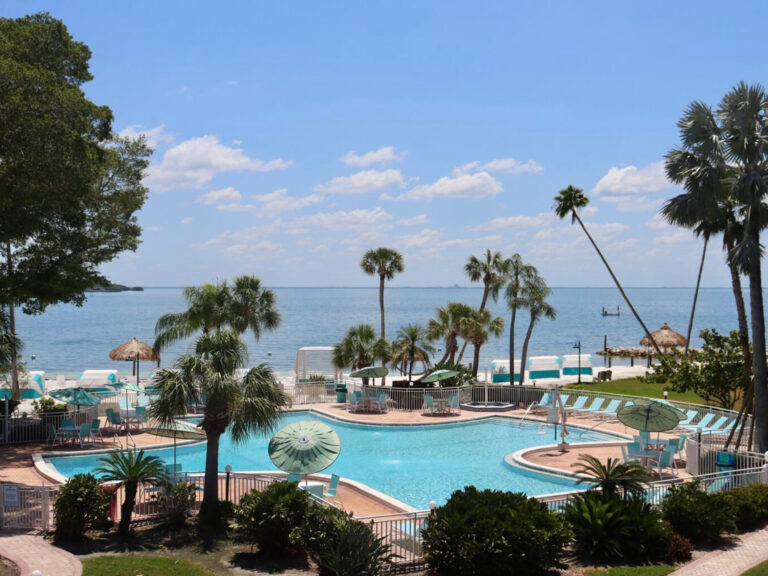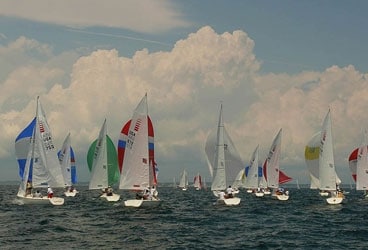
FTEDraheim368
My mentor, world champion Bruce Goldsmith, taught me many subtle techniques that help win championships. I wrote about how he taught me the importance of getting on the first shift immediately after the start (“Bruce Knew When to Bail,” Sept. ’07). Another thing he taught me was the importance of getting around the course as quickly as possible. This might seem blatantly obvious; you wouldn’t intentionally go around as slowly as possible would you? But it happens more often than you think, because as soon as you interact with other boats you’re taking your mind off going as fast as you can.
I have engaged in pre-race tune-ups against hundreds of boats during my career, and I’ve always been amazed how fast many of the boats have been. Most had more than enough speed to win a race, but few ever did. A large part of the reason is that during tune-up sessions most people can sail their boats at maximum efficiency. During a race, however, sailors get distracted and caught up with other boats on the course, resulting in them sailing at maximum efficiency for less time. The key, Goldsmith, taught me, is to deal with other boats in a way that won’t slow you down.
This doesn’t mean banging the corner and avoiding your competitors all together. The best way to deal with them is to use them as your gauge, to check your speed and angle. In many cases, the only way to tell whether an adjustment you make on your boat is the proper one is to measure against another boat nearby. Other boats also make tremendous wind indicators: the best way to recognize a windshift or velocity change is from a boat ahead. Conversely, when going downwind, use the boats behind to see what is about to happen.
The bigger the fleets, obviously, the more difficult it becomes to sail at maximum efficiency, but there are a number of problem areas to be aware of: the start is at the top of the list. Many sailors tend to pinch off the starting line when they are leeward and ahead of a boat in close proximity. Others tend to foot if they are windward and ahead. If you apply the Goldsmith principle, both are bad moves. Remember, the only way to win is to sail at maximum efficiency more often than your competitors. If you get a good clean start, sail as if no boats are around you.
Upwind in oscillating breeze many people “burn” part of an advantageous shift so they can interfere with other boats. Instead of tacking when a shift first occurs, they wait for an opportunity to tack on and slow a nearby boat. It’s better to tack as soon as the shift occurs, taking full advantage of it. There are other boats on the course that aren’t “burning” a shift to mess with another boat, and they’re maximizing their gain. Remember, you’re racing boats on all parts of the course, not just the guy closest to you.
If you tack to leeward and ahead of a boat, don’t pinch in an effort to slow the windward boat. Pinching will slow your boat, which again, is not efficient. There seems to be an obsession with upwind pointing ability, and many who have the ability to pinch use it even if they are sailing at a net loss. The most commonly asked question I get at seminars is, “How can I point higher?” The answer is simple: turn into the wind a little more and luff more of the front of your jib. The better question, however, might be, “By pinching am I making a net gain or net loss?” The answer, of course, is a net loss.
One of the requirements of sailing efficiently is to sail in clean air. A common mistake many right-of-way starboard-tack boats make is to force a port-tack boat that’s nearly crossing to tack to leeward and ahead. If you are on a given tack, it’s because you feel you’re lifted or going the direction you want to go. The last you thing you want is a boat parking itself to leeward and ahead, giving you bad air. This boat on your lee bow is now likely pinching, forcing you both to sail inefficiently for several boatlengths before you’re forced to tack away. So if a port tacker has their bow even slightly ahead of your bow, wave them across and duck. The key is to be able to continue in the direction you want to go.Another common mistake is sailing beyond the layline. With every foot you overstand you’re not sailing efficiently to the mark, and sailing past layline to give someone dirty air does neither one of you any good.
Previous articles have suggested that if you set up high on the downwind leg you will steal the air of a boat underneath you and sail past them. The problem with this logic is that it doesn’t take into consideration the likelihood that the boat you’re trying to pass to windward of will respond by sailing higher (and away from the mark) to keep its air free. The result is that both boats sail extra distance while others are sailing the rhumbline. If you’re behind, to catch the boat ahead, pass to leeward instead. At the leeward mark, don’t make a last-minute turn above the rhumbline to give dirty air to the boat ahead of you. The problem with this is you’ll end up sailing much too low, possibly by the lee, to get back down to the leeward mark. Additionally, the proper way to round the leeward mark is to start the rounding wide of the mark and end the rounding tight. It’s hard to start your rounding wide if you are coming into it from straight above.
When sailing up the final beat you must continue to look forward and base your decisions on what is coming at you, not what’s behind. Many people look backward trying to decide which group of boats they want to lead to the finish. You must look ahead and sail for the best velocity and angle all the way to the finish. In other words, sail your own race.
Perhaps a good way to understand Bruce’s concept of racing the course is to compare it to other sporting events. A sailboat racecourse is not at all like an automobile racetrack where you can control a race by blocking competitors and forcing them to drive extra distance. A sailboat course is more like a 20-lane swimming pool, especially when going upwind. You should focus only on controlling your boat and the lane it is in because there’s no way to control the boat that’s 18 lanes over. Remember, most of you are fast enough to win, so spend more time going fast and sailing a shorter distance.
“Tactics” from the October 2007 issue of Sailing World

